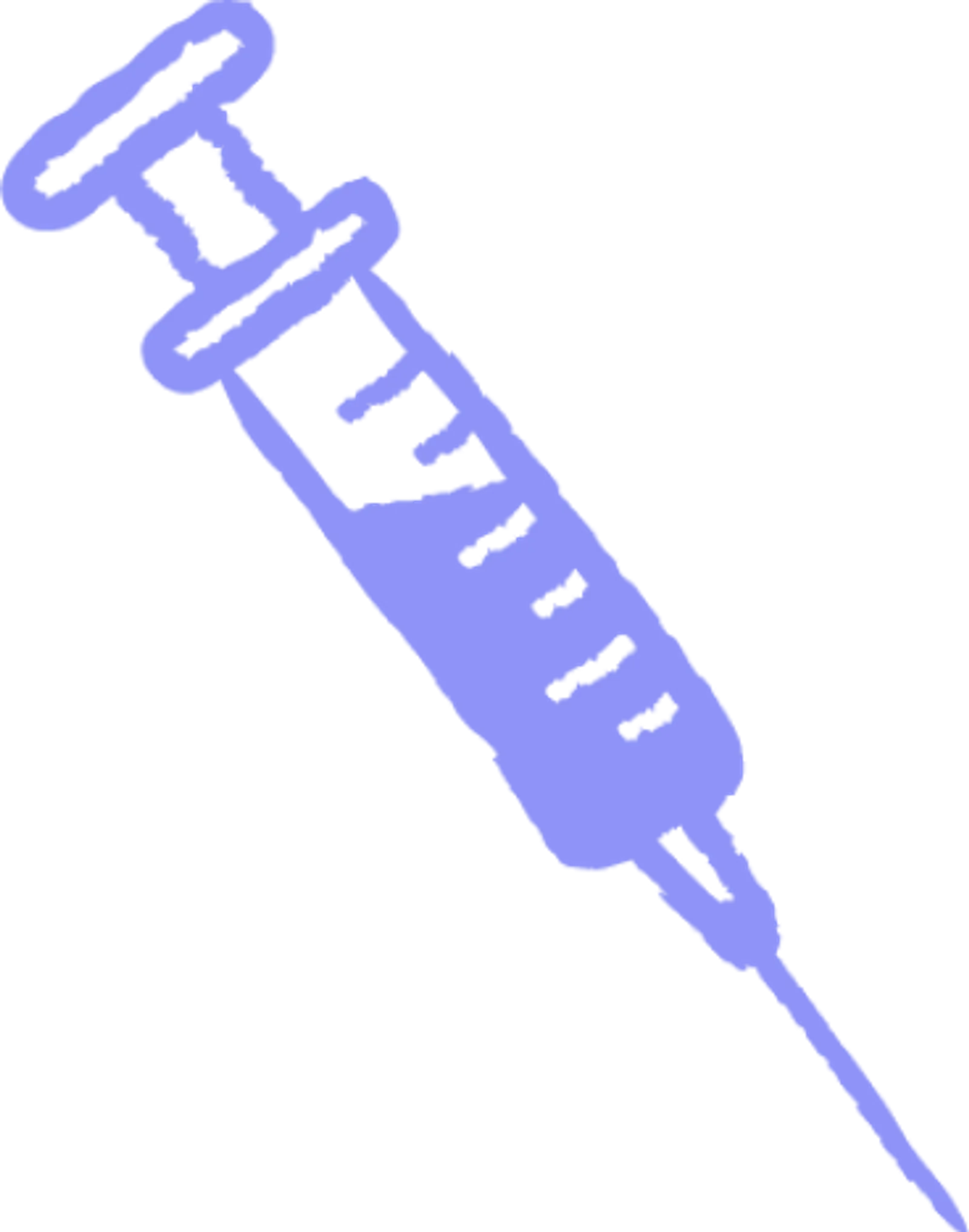Plasma 101
Who: Eligible donors between 18 and 63 can earn up to $560 a month in NY and up to $770 a month in FL.
What: Plasma is the yellow part of your blood that replenishes naturally.
Where: Queens, Brooklyn, The Bronx (NY), and Ft. Pierce (FL).
Why: Get paid to donate and help treat bleeding disorders, immune deficiencies, and more.
When: No appointment needed—walk in anytime before closing.
Plasma Donation and Your Health

Plasma Donation and Your Health
Thinking of donating your plasma but unsure of the impact on health? As demand soars for plasma-derived therapies, more donors are needed. This article clearly details how routine plasma donations can actually provide some benefits. You’ll also learn proper protocols to enhance safety plus the incredible potential of plasma medicines.
Regular plasma donation strengthens cardiovascular health - studies show frequent donors have 13% less risk of heart disease. Temporary impacts like fatigue and bruising usually resolve within 12 hours. Plasma itself regenerates within 72 hours. Provided health standards and 2-day intervals between donations are followed, there are no long-term health impacts for donors.
Health Impacts and Benefits of Plasma Donation:
Aspect | Details |
Health Benefits | Improved cardiovascular health in frequent donors. Regular health screenings catch issues like high blood pressure early. Cardiovascular benefits from blood volume replacement. Psychological gains from altruism, boosting mood and emotional wellbeing. |
Physical Impact | Short-term drop in blood volume, fully regenerating in 24-48 hours. Plasma regeneration within 72 hours. Increased energy and nutrient demands post-donation. Temporary impacts include fatigue, feeling chilled, and decreased exercise capacity. |
Safety Measures | Rigorous health screens at Olgam Life branches. Close monitoring of vital signs during donation. No lasting health impacts with adherence to donation intervals. |
Potential Risks | Common side effects include bruising, fatigue, tingling, dizziness. Hydration and rest recommended to mitigate side effects. Myths debunked: No weakened immune system, no risk from equipment, minimal vein damage. |
How Plasma Donation Impacts Your Health
Health Benefits of Regular Plasma Donation
Donating plasma on a regular basis is shown to boost health and can provide some excellent health benefits. Studies have shown that frequent plasma donors tend to have improved cardiovascular health compared to non-donors. The regular health screens required to donate plasma allow issues like high blood pressure or cholesterol to be caught early. These regular check-ups promote healthy lifestyle changes before problems arise.
Additionally, the actual process of plasma donation itself provides cardiovascular benefits. As blood volume needs to be replaced after donation, the heart works harder to pump blood around the body. This leads to a slight training effect over time, strengthening the heart muscle. Researchers have compared it to the cardiovascular benefits seen in regular blood donors over long periods.
There are also psychological gains from being a committed plasma donor. Knowing that your plasma donations makes a difference and will go on to help save lives can provide an immense feeling of reward. This altruism releases endorphins which boost mood and emotional wellbeing. At Olgam Life branches, donors can see information about how many patients their donations have helped, reinforcing this positive effect.
Understanding the Physical Impact of Plasma Donation
Donating plasma does have some short term physical impacts, but the body is well equipped to handle and recover from these. During the donation process, whole blood is taken, with components like plasma separated off, before red blood cells and other elements are returned. This does lead to a drop in overall blood volume that takes 24-48 hours to fully regenerate.
Plasma itself also regenerates rapidly after donation, with donor levels usually restored completely within 72 hours. This regeneration process ramps up remaining plasma production to replace what has been donated. Energy and nutrient demands do increase during this period so donors should ensure they eat a balanced diet and get adequate rest. Staying well hydrated by drinking more fluids also aids the plasma regeneration process.
Some temporary impacts straight after donating can include fatigue, feeling chilled, and decreased exercise capacity for the rest of the day. Headaches are sometimes reported too. However, with some rest and self-care focused on recovery, donors usually feel normal within 6-12 hours. Studies tracking frequent donors have shown no long term health impacts compared to non-donors. As long as minimum intervals between donations are respected, the body can quickly bouncing back from any plasma volume drop.
At Olgam Life branches, donors giving plasma can expect excellent medical support before, during and after the process. Rigorous health screens ensure only eligible donors participate, reducing risks. Medical staff closely monitor vital signs throughout to minimize side effects.
With high health and safety standards, plasma donation should not have any lasting health impacts. The benefits for patients in need far outweigh the short term impacts felt temporarily by committed donors.

Plasma Donation Process and Benefits:
Aspect | Details |
Contribution to Medical Research | Direct contribution to medical research and treatment development. Vital for studies on immune responses and chronic conditions. Necessary for immunoglobulin medicines and plasma protein therapies. |
Financial Incentives | Compensation starting at $50 per donation, up to $100 for frequent donors. Additional referral bonuses. Financial support for donors, especially in disadvantaged neighborhoods. |
Eligibility and Preparation | Age 18-65, minimum weight of 110 pounds. Good health, no chronic infections or bleeding disorders. Hydration and avoidance of fatty foods recommended before donation. |
Donation Procedure | Health checks and blood tests upon arrival. Medical history questionnaire and vitals recording. Blood draw and plasma separation process lasting 45-60 minutes. Aftercare instructions and compensation provided post-donation. |
The Benefits of Plasma Donation
Contributing to Medical Advancements
Donating plasma provides an opportunity to contribute directly to cutting-edge medical research and help develop new treatments that can help in treating disease. Plasma contains proteins that are vital for many medical applications and is more easily collected than other blood components. This makes plasma incredibly useful to researchers.
Plasma donations enable studies analyzing immune responses to infections and vaccines. This supports public health initiatives in tackling epidemics or outbreaks. Donated plasma can also further research into chronic conditions like autoimmune disorders. Understanding diseases leads to more effective therapies.
Specific plasma proteins are used to create medical therapies called plasma protein therapies. These are used to treat patients with life-threatening conditions worldwide. Plasma is necessary for immunoglobulin medicines treating immune deficiencies. Other medications use plasma proteins to replace what diseased livers can’t make.
As technology and research techniques improve, even more treatments utilizing plasma are likely to emerge. By donating regularly at centers like Olgam Life, donors ensure researchers have consistent plasma supply for innovations that save lives. Their plasma could provide the key breakthrough or treatment for previously untreatable diseases.
Financial Incentives and Compensation
For many donors, a key benefit of plasma donation is the financial compensation. As producing plasma protein therapies requires significant donor plasma, depending on the plasma donation center, some offer incentives for commitment such as paid plasma donation. This ensures plasma supply meets both current and future medical demand.
At Olgam Life branches, registered donors receive payment loaded onto prepaid cards at the end of every donation. Earning rates depend on total lifetime donations rather than individual visits. Compensation starts at $50 per donation, with the highest tier donors earning up to $100 per donation. Additional referral bonuses are also available.
This can provide a nice income boost, especially for those facing financial difficulties. Plasma donation centers specifically target opening branches in disadvantaged neighborhoods to offer this financial support. For students, the unemployed or those in low wage jobs, compensation from twice weekly plasma donations can be life changing.
The money from plasma donation assists donors with affording necessities like rent, bills, medical expenses or even college tuition. However, donor health is always the priority, with strict procedures ensuring the frequency of donations is not putting individuals at risk. As Olgam Life builds enduring, supportive relationships with registered donors over time, they help ease financial burdens in local communities.
Understanding Potential Risks
Common Side Effects and How to Mitigate Them
Plasma donation is extremely safe but does commonly lead to minor short-term side effects. The most reported are bruising, fatigue, tingling sensations, and dizziness after donating. Others include nausea or headaches. These arise from the plasma volume drop and blood shifting as levels regenerate.
Bruising results from the venipuncture process and blood pressure cuff. Keeping the needle site compressed for 5-10 minutes can minimize bruises. Avoiding tight clothing over the area also reduces irritation. Cold compresses ease discomfort from bruising when back home.
Hydration is key to lessening other side effects. Drink more non-caffeinated fluids 24 hours before and after donating along with extra salty snacks. This stabilizes plasma volume faster, reducing dizziness and fatigue. Eating protein-rich meals and resting afterwards also helps side effects dissipate quicker.
While inconvenient, side effects from donating plasma are temporary. At Olgam Life centers, donors receive guidance on mitigating these from knowledgeable medical staff. Monitoring after donation identifies anyone at risk of ongoing issues so care can be provided. Excellent duty of care means most donors leave feeling perfectly fine.
Addressing Myths and Misconceptions
There are many common myths related to plasma donation. A major one is that the process weakens the immune system. Plasma itself contains very few white blood cells involved in immunity. Red blood cells also return quickly, carrying oxygen to power the immune response. Provided minimum intervals between donations are observed, there are no long-term impacts to immunity. Check out the power of plasma in immunity.
Another myth is that you can “catch” something from the donation equipment. All equipment goes through rigorous cleaning and sterilization procedures at regulated intervals. Single-use disposables like tubing sets and needles ensure no donor-to-donor contact. There is no risk of infections from equipment when strict health standards are maintained.
Some believe vein damage, scarring, or collapse can result from repeated plasma donations. Yet current venipuncture techniques minimize this risk and staff are highly trained in rotated site selection for cannulation. This prevents the same vein being used excessively. Ultrasound visualization also improves accuracy and safety. Follow-up support checks for rare cases of phlebitis.
While selling plasma sounds risky to some, the truth is that compensation exists due to constant medical demand. Robust regulation and oversight governance ensures donor health through strict eligibility criteria. There are do’s and don’t’s to plasma donation but with the correct procedures, plasma donation has minimal effect on individuals. Excellent duty of care from the likes of Olgam Life also enhances safety.
The Process of Plasma Donation
Eligibility and Preparation for Donation
There are some eligibility guidelines that donors must meet to donate plasma. You need to be aged between 18-65 and weigh at least 110 pounds. Good health with no bleeding disorders or chronic infections is also required. Medications for conditions like diabetes or blood pressure are usually fine.
Potential donors should adopt some preparation habits leading up to appointments. Being well hydrated makes blood draw easier so drink more non-caffeinated fluids. Avoid fatty foods to help plasma separation. Get adequate rest because plasma regenerates during sleep.
Some centers recommend eating high protein foods 24 hours prior or taking iron supplements several days before donating. At Olgam Life branches, donors receive nutrition advice if tests show low protein or iron levels. Staff may suggest deferring donation for a set time to restore these.
For first-time donor appointments, have a satisfying meal and hydrate well. Avoid alcohol intake 48 hours prior. Have your photo ID and social security card plus proof of address. Wear accessible upper arm clothing. Understanding eligibility and preparing mindfully makes the process smoother.
The Donation Procedure Explained
On arrival at an Olgam Life center, donors must check in and undergo a quick fingertip blood test checking protein and hematocrit levels. This verifies health status since last donation. All staff introduce themselves before visually inspecting vein suitability and cleansing the arm area with an antiseptic wipe.
Donors then answer the medical history questionnaire before vitals like blood pressure and pulse are recorded electronically by staff. The arm area is then re-cleansed and a sterile needle inserted for the blood draw. Tubing connects this needle to an automated machine which separates and collects only plasma. Remaining red cells and plasma elements return to the body.
During donation, an anticoagulant mixes with the blood to prevent clotting. A gentle pumping action draws out and separates the blood continuously. The process takes around 45-60 minutes depending on plasma volumes collected, which staff monitor closely. Donors can watch TV, read or use WiFi throughout.
When adequate plasma has collected, tubing detaches and the needle is removed before a staff member dresses the puncture site. 10 minutes of compression helps clotting prior to a final check of vital signs. Staff then explain aftercare and hand out refreshments as donors rest momentarily. The whole first appointment takes around two hours maximum.
Donors then check out, receiving compensation, scheduling next appointments and a 24 hour helpline number. Subsequent sessions take less time as health checks and paperwork are only occasional. Excellent duty of care ensures the process goes smoothly every visit.
Plasma donation helps to save lives. If you are ready to start your journey in plasma donation, get in touch with Olgam Life. If you have any questions, give us a call or check out our frequently asked questions.
















